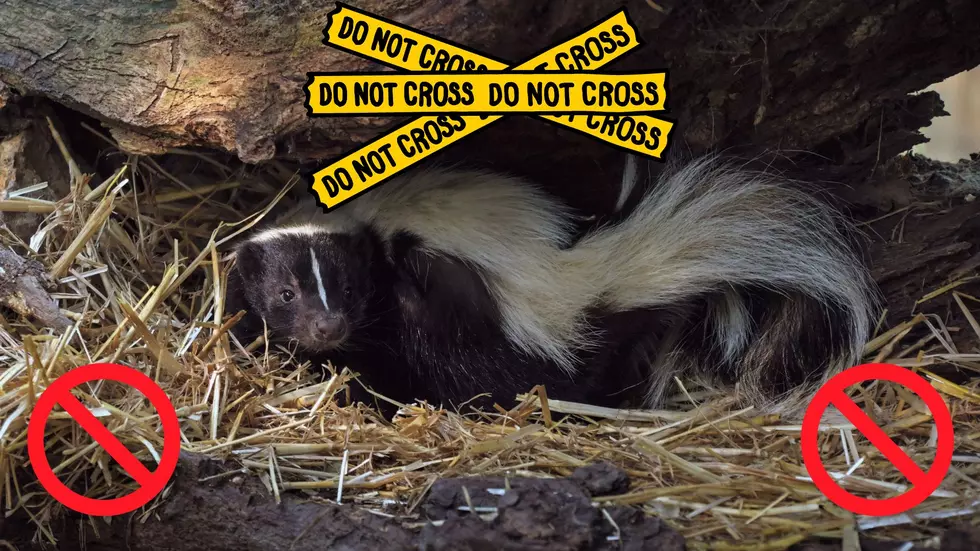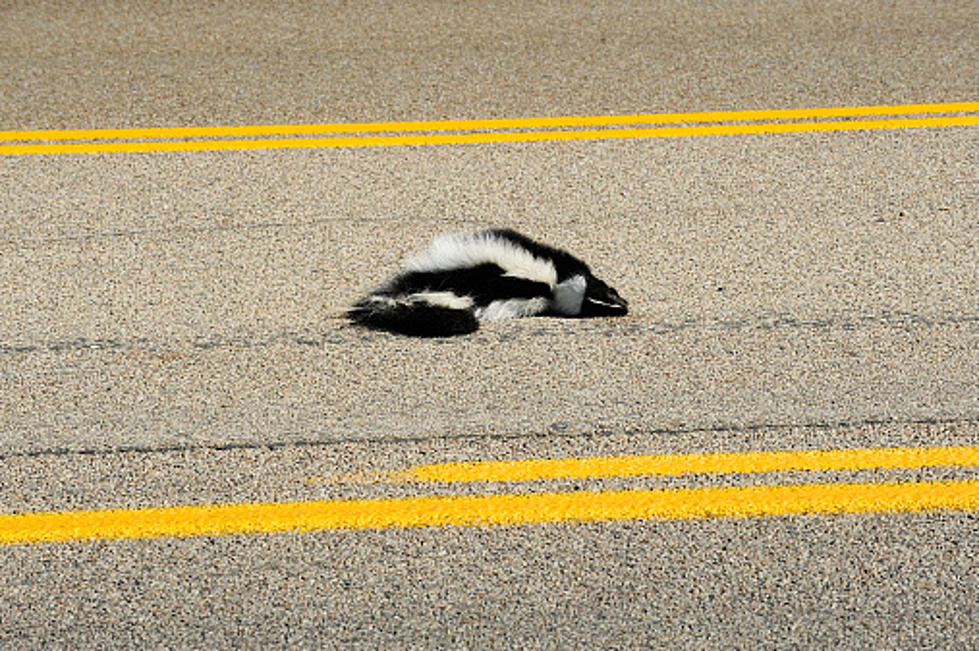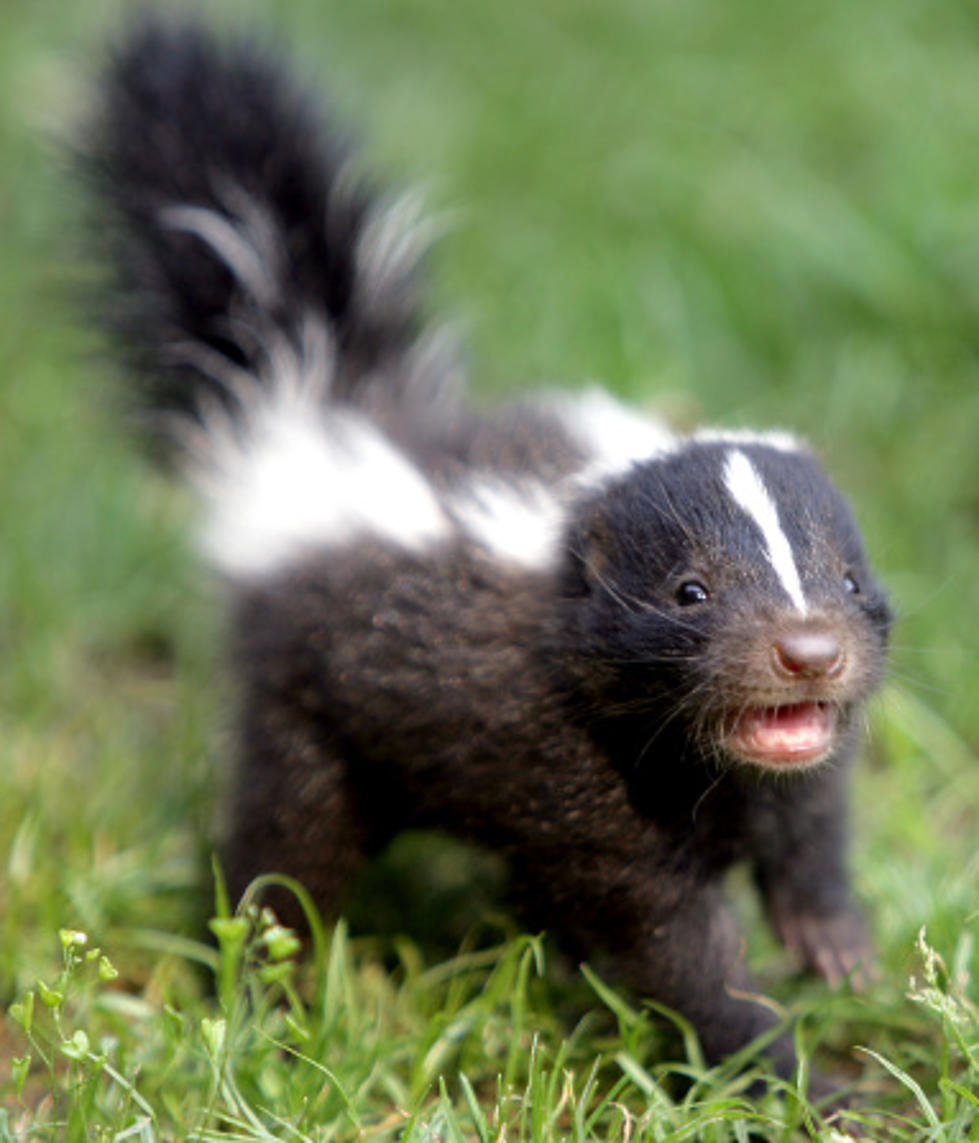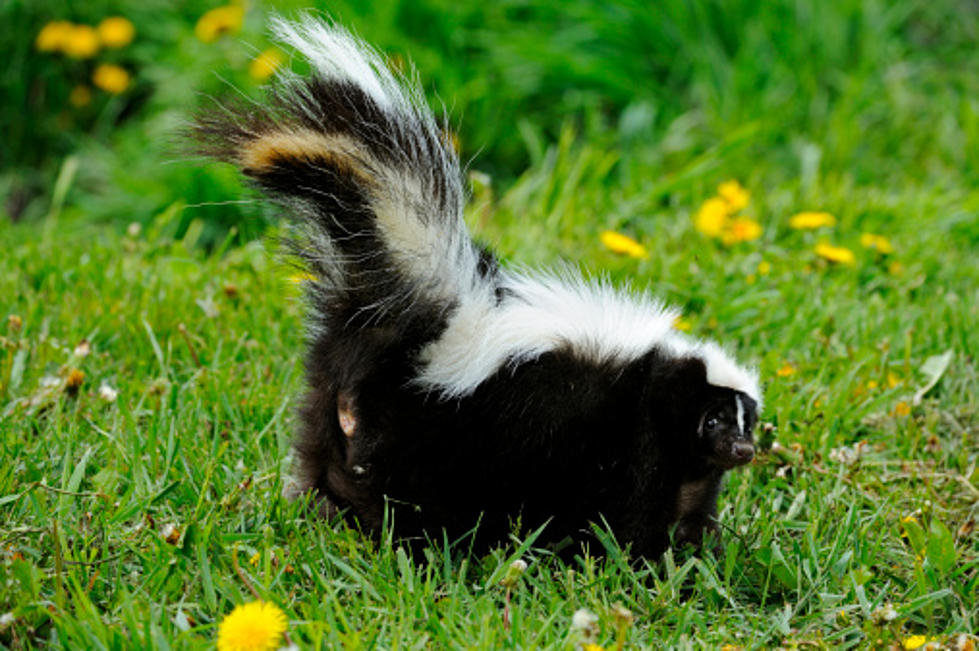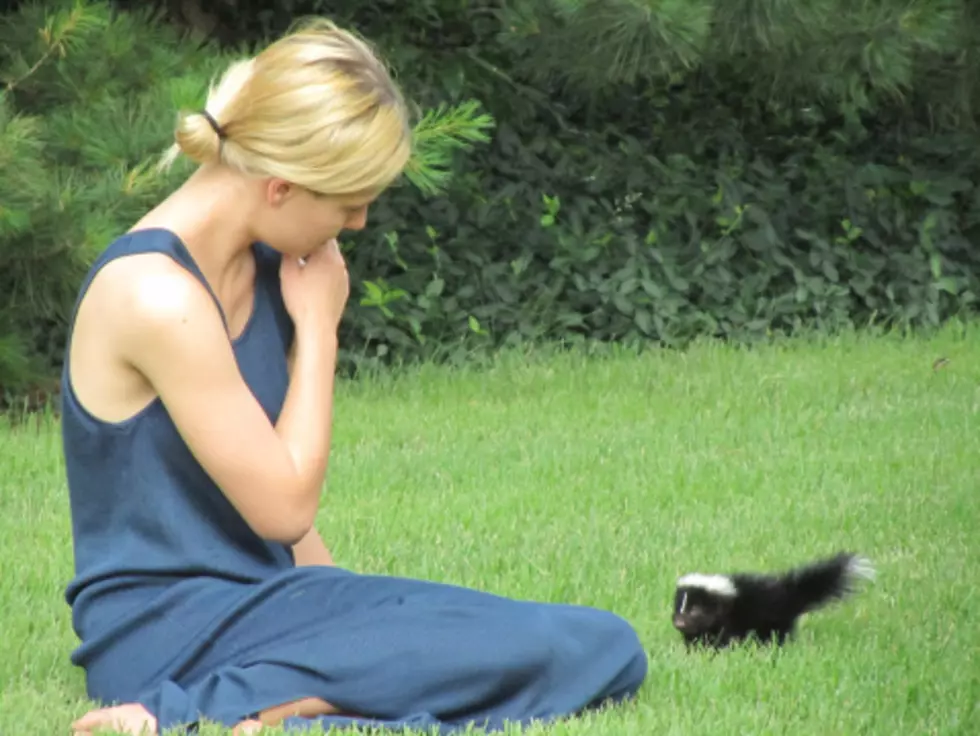
Illinois’ Skunks Are Really Active Right Now, Here’s Why
If you see a skunk here in Illinois (and the calendar says that you probably will), you're probably looking at the striped skunk, the most common and only skunk native to Illinois. Our state is also home to spotted skunks, hooded skunks and hog-nosed skunks, but there are far less of them.
I didn't know until this morning that there are 12 total species of skunk scattered around the globe:
- Striped skunk
- Hooded skunk
- Western spotted skunk
- Eastern spotted skunk
- Southern spotted skunk
- Pygmy spotted skunk
- American hog-nosed skunk
- Striped hog-nosed skunk
- Humboldt’s hog-nosed skunk
- Molina’s hog-nosed skunk
- Indonesian stink badger
- Palawan stink badger
When We Get Into The Fall Season, Illinois' Skunks Get Busy--And Your Chance Of An Encounter Goes Way Up
Here in Illinois, skunk mating season takes place in February and March. After a gestation period of about 8 to 10 weeks, a litter that can range between 1 and 9 "kits" is born. The kits (baby skunks are kits, male skunks are "bucks," and a female is a "doe") are then raised in a den of some sort, usually taken from another animal.
But when Fall hits Illinois, the mother skunks tell their young to get out and go find their own place, which brings us to why Illinois skunks are super active right now:
They're young, they're house-shopping and grub hunting, and they can be quick to spray you or your pets.
The Striped Skunk Will Give You A Warning Before Letting Loose With That Foul Smelling Spray, So It's A Good Idea To Know What To Look For
According to the skunk fact sheet from the Illinois Department of Natural Resources (IDNR), the skunk is known for its bad-smelling scent that is used to spray any animal it considers to be a threat. When initially disturbed, the skunk will arch its back, raise its tail to show the scent glands and stomp the ground. It only releases its foul scent after this warning.
Here's what that pose looks like:
And here's what a more athletic skunk does:
For the next few weeks, keep your eyes open for these little creatures all around Northern Illinois, and it wouldn't hurt to have a "scent removal plan" if you've got pets that spend time outdoors, especially at night. Skunks are nocturnal, and do most of their roaming after dark.
Why do cats have whiskers? Why do they meow? Why do they nap so much? And answers to 47 other kitty questions:
Check out these 50 fascinating facts about dogs:
More From WROK 1440 AM / 96.1 FM
